Difference between revisions of "Tanning leather"
| Line 5: | Line 5: | ||
==What is ‘tanning’?== | ==What is ‘tanning’?== | ||
| − | The usage of animal skins dates back to the stone ages, presumably as [[Leather tents & Tent walls|tarpaulins]], protective [[Leather clothing| | + | The usage of animal skins dates back to the stone ages, presumably as [[Leather tents & Tent walls|tarpaulins]], protective [[Leather clothing|clothing]] or for the manufacture of [[Leather belt|belts]], [[Leather straps|harnesses]], [[Leather handbags|bags]] and [[Leather bucket|containers]]. Animal skins were [[Drying leather|dried]], [[Tanning with fats and oils|fats]] were incorporated into the leather to make them [[Haptic evaluation of leather surfaces|softer]] and to make them [[Waterproofing leather|waterproof]] and they were possibly [[Brain tanning|smoked]] to preserve the result. But this type of preservation was no real tanning. |
| − | In ancient times, tanning was considered to be an ‘odoriferous’ trade. Tanning by ancient methods was indeed extremely foul smelling and hence most [[tannery|tanneries]] were situated in the outskirts of towns. The combined use of urine, | + | In ancient times, tanning was considered to be an ‘odoriferous’ trade. Tanning by ancient methods was indeed extremely foul smelling and hence most [[tannery|tanneries]] were situated in the outskirts of towns. The combined use of urine, animal feces and the smell of decaying flesh due to absence of [[Preservation by drying, salting or freezing|conservation options]] was what made ancient tanneries so odoriferous and the profession of [[tanner]] unpopular. |
Proper '''tanning''' is the most important step in the [[leather production]]. The tanning process is just one part in the entire process of manufacturing leather. Tanning is called the long-term preservation process of animal [[Hide - Skin|skin]], with or without [[fur|hair]] by [[tannins]]. Tannins, which are an acidic chemical compound when in contact with the animal skin, stabilise the fibre structure of the skin and prevent it from decaying, decomposing and oxidisation. A [[tannery]] is the place where these skins and hides are processed and the profession is called [[tanner]]. The tanning process involves a lot of stages where the skins have to be treated first and once tanned depending on the application and specific customer requests the leather has to be [[leather colour|dyed]], [[Ironing leather|ironed]], [[Sanding leather|sanded]], [[Pull up leather - Greased leather - Waxed leather - Oiled leather|oiled]] etc. There are endless variations | Proper '''tanning''' is the most important step in the [[leather production]]. The tanning process is just one part in the entire process of manufacturing leather. Tanning is called the long-term preservation process of animal [[Hide - Skin|skin]], with or without [[fur|hair]] by [[tannins]]. Tannins, which are an acidic chemical compound when in contact with the animal skin, stabilise the fibre structure of the skin and prevent it from decaying, decomposing and oxidisation. A [[tannery]] is the place where these skins and hides are processed and the profession is called [[tanner]]. The tanning process involves a lot of stages where the skins have to be treated first and once tanned depending on the application and specific customer requests the leather has to be [[leather colour|dyed]], [[Ironing leather|ironed]], [[Sanding leather|sanded]], [[Pull up leather - Greased leather - Waxed leather - Oiled leather|oiled]] etc. There are endless variations | ||
| Line 35: | Line 35: | ||
When tanning two types of tanning can be distinguished: The real tanning and the unreal tanning. | When tanning two types of tanning can be distinguished: The real tanning and the unreal tanning. | ||
| − | In the real tanning [[tannins]] form an irreversible bond with the skin | + | In the real tanning [[tannins]] form an irreversible bond with the skin fibre. This is after [[Chrome tanned|chrome tanning]] or [[Vegetable-tanned leather|vegetable tanning]] the case. |
When unreal tanning, the binding of [[tannins]] to the leather fibre is washable and unstable. This is the case when [[Tawing with alum|tawing]], [[tanning with fats and oils]] and the [[brain tanning]] (Special case of tanning with fats and oils). The simple drying of leather with the final parchment is not called "tanning" and the parchment even not as leather. | When unreal tanning, the binding of [[tannins]] to the leather fibre is washable and unstable. This is the case when [[Tawing with alum|tawing]], [[tanning with fats and oils]] and the [[brain tanning]] (Special case of tanning with fats and oils). The simple drying of leather with the final parchment is not called "tanning" and the parchment even not as leather. | ||
| Line 41: | Line 41: | ||
==Tanning methods== | ==Tanning methods== | ||
| − | The main tanning methods | + | The main tanning methods are the '''[[Chrome tanned|chrome tanning]]''' (most of the [[Leather clothing|clothing leather]] and the [[Leather shoes#Main leather terms for shoes#upper leather|upper leather of shoes]]), the '''[[Vegetable-tanned leather|vegetable tanning]]''' (most [[Leather belt|leather belts]], [[Leather shoes#Main leather terms for shoes#sole leather|sole leather]], [[Leather saddle|riding leather]]) and the '''[[Synthetic tanned|synthetic tanning]]'''. |
| − | Often various tanning methods are combined in order to achieve certain properties of the final product. For example the combination of synthetic tanning with chrome or vegetable tanning. This is known as '''combination tanning'''. Variants: E.g. vegetable with subsequent chrome tanning (semi-chrome leather), chrome tanning followed by vegetable tanning (chrome retanning). | + | Often various tanning methods are combined in order to achieve certain properties of the final product. For example, the combination of synthetic tanning with chrome or vegetable tanning. This is known as '''combination tanning'''. Variants: E.g. vegetable with subsequent chrome tanning (semi-chrome leather), chrome tanning followed by vegetable tanning (chrome retanning). |
In France, Holland and Italy the term semi-chrome leather, includes both chrome tanning with vegetable re-tanning as well as a vegetable tanning with chrome re-tanning. | In France, Holland and Italy the term semi-chrome leather, includes both chrome tanning with vegetable re-tanning as well as a vegetable tanning with chrome re-tanning. | ||
| Line 54: | Line 54: | ||
| − | Another well-known kind of tanning is the '''[[Tanning with fats and oils|tanning with fats and oils]]'''. Therefore | + | Another well-known kind of tanning is the '''[[Tanning with fats and oils|tanning with fats and oils]]'''. Therefore fatty animal substances such as [[brain tanning|brain]], fish oil or tallow is used. [[Chamois leather]] is a known result of such a tanning method. |
| − | Also well known method of "tanning" is called ‘[[Tawing with alum|Tawing]]'. This kind of tanning one of the oldest tanning methods. This converts the animal hide using a mixture of alum ( | + | Also well-known method of "tanning" is called ‘[[Tawing with alum|Tawing]]'. This kind of tanning one of the oldest tanning methods. This converts the animal hide using a mixture of alum (aluminium sulphate) and saline. Twaning produces white leather. The tanning process is not permanent because the tannins can be flushed out by water. This type of leather is therefore not washable. |
| Line 67: | Line 67: | ||
The oldest is the [[tanning with fats and oils]] which is occupied since about 6000 BCE. Vegetable tanning is known since about 4000 years (bronze age). | The oldest is the [[tanning with fats and oils]] which is occupied since about 6000 BCE. Vegetable tanning is known since about 4000 years (bronze age). | ||
| − | Since 1900, [[chrome tanned|chrome tanning]] is the most common and preferred method of tanning. Mainly due to the speed at which leather can be produced (a few days) and the simplicity of the working process. In contrast, [[Vegetable-tanned leather|vegetable tanning]] requires 15 months or longer. In 2001, already 78% of all leather in Germany were chrome tanned, 21% vegetable tanned and only 1% tanned as chamois. Globally, a share of approximately 80% of all leather is tanned using the chrome tanning | + | Since 1900, [[chrome tanned|chrome tanning]] is the most common and preferred method of tanning. Mainly due to the speed at which leather can be produced (a few days) and the simplicity of the working process. In contrast, [[Vegetable-tanned leather|vegetable tanning]] requires 15 months or longer. In 2001, already 78% of all leather in Germany were chrome tanned, 21% vegetable tanned and only 1% tanned as chamois. Globally, a share of approximately 80% of all leather is tanned using the chrome tanning method and 10 - 12% using the vegetable tanning process. |
| − | The type of tanning method used, can be identified by the colour of the uncoloured leather (before [[Leather colour|colouring and before finishing]]). If [[Vegetable-tanned leather|vegetable tanned]], the leather is brown. If [[tanning with fats and oils|tanned with fats or oils]], it is yellowish. When the [[Tawing with alum|tawing method]] is used, the leather is white and [[Chrome tanned|chrome tanned]] results are bluish | + | The type of tanning method used, can be identified by the colour of the uncoloured leather (before [[Leather colour|colouring and before finishing]]). If [[Vegetable-tanned leather|vegetable tanned]], the leather is brown. If [[tanning with fats and oils|tanned with fats or oils]], it is yellowish. When the [[Tawing with alum|tawing method]] is used, the leather is white and [[Chrome tanned|chrome tanned]] results are bluish grey ([[wet blue]]). |
| Line 77: | Line 77: | ||
|+'''Proportion of [[chrome tanned]] leather in various sectors of use''' | |+'''Proportion of [[chrome tanned]] leather in various sectors of use''' | ||
| − | !bgcolor="#cccccc" | | + | !bgcolor="#cccccc" | Sector|| bgcolor="#cccccc" | [[chrome tanned]] leather in % || bgcolor="#cccccc" | trend |
|- | |- | ||
| [[Leather shoes#Main leather terms for shoes#upper leather|upper leather of shoes]] | | [[Leather shoes#Main leather terms for shoes#upper leather|upper leather of shoes]] | ||
| Line 85: | Line 85: | ||
| [[Leather furniture|Furniture leather]] | | [[Leather furniture|Furniture leather]] | ||
|style="text-align: center"| 70 | |style="text-align: center"| 70 | ||
| − | |style="text-align: center"| decrease in | + | |style="text-align: center"| decrease in favour of [[Chrome tanned#Chrome-free leather - FOC = Free of Chrome|free of chrome]] |
|- | |- | ||
| [[Car leather]] | | [[Car leather]] | ||
|style="text-align: center"| 50 | |style="text-align: center"| 50 | ||
| − | |style="text-align: center"| decrease in | + | |style="text-align: center"| decrease in favour of [[Chrome tanned#Chrome-free leather - FOC = Free of Chrome|free of chrome]] |
|- | |- | ||
| [[Leather clothing|Clothing leather]] | | [[Leather clothing|Clothing leather]] | ||
| Line 116: | Line 116: | ||
==Retanning== | ==Retanning== | ||
| − | Primary tanning is not always sufficient to maintain the desired characteristics specified by the customer. It is therefore re-tanned. The [[tannins]] used for this process are different than those used in the Primary tanning stage. This process is called combination tanning. The retanning affects the [[Haptic evaluation of leather surfaces|feel of the leather]], the [[leather colour| | + | Primary tanning is not always sufficient to maintain the desired characteristics specified by the customer. It is therefore re-tanned. The [[tannins]] used for this process are different than those used in the Primary tanning stage. This process is called combination tanning. The retanning affects the [[Haptic evaluation of leather surfaces|feel of the leather]], the [[leather colour|dye ability]], the fullness of the leather, the fineness of the [[Grain side|grain]] and the stability of grain and other factors such as [[Colour fastness - Light fastness of leather|light fastness]] before [[finish|finishing]]. |
The retanning also has a fading effect which can be enhanced by lightening tannins. This is important for light [[aniline leather]] without [[leather colour|pigmentation]]. After chrome tanning, leather is green-bluish. The leather dye has no opacity. White leather would then be always greenish-bluish. By retanning, the leather can be bleached to get better results. | The retanning also has a fading effect which can be enhanced by lightening tannins. This is important for light [[aniline leather]] without [[leather colour|pigmentation]]. After chrome tanning, leather is green-bluish. The leather dye has no opacity. White leather would then be always greenish-bluish. By retanning, the leather can be bleached to get better results. | ||
| − | In the process of retanning | + | In the process of retanning pigments can be added into the drum, which equalizes the surface colouration. |
==[[Tannery]]== | ==[[Tannery]]== | ||
| − | [[Tannery|Tanneries]] are plants, were [[tanner|tanners]] transform the skin of slaughtered animals into [[leather]]. The [[rawhide]] undergoes many steps before turning to leather or [[fur]]. Depending on the purpose the leather, it may then be used by various industries to produce [[Leather shoes|shoes]], [[Leather clothing|clothing]], [[Leather handbags|bag]], | + | [[Tannery|Tanneries]] are plants, were [[tanner|tanners]] transform the skin of slaughtered animals into [[leather]]. The [[rawhide]] undergoes many steps before turning to leather or [[fur]]. Depending on the purpose the leather, it may then be used by various industries to produce [[Leather shoes|shoes]], [[Leather clothing|clothing]], [[Leather handbags|bag]], [[Car leather|automotive]] and [[Leather furniture|upholstered furniture]]. The end user rarely gets the hides or skins unprocessed in his hands. Maximum [[Sheepskin - Lambskin|sheepskins]] or decorative [[Hide - Skin|skins]] without further processing are desired by consumers. |
| Line 143: | Line 143: | ||
| − | Apart from wooden drums, also stainless steel and plastic drums are also used in the tanning industry. However, there are many reasons why wooden drums are preferred over other types. Wood is durable against strong alkaline solutions and chemicals used in the initial stages of the tanning processes | + | Apart from wooden drums, also stainless steel and plastic drums are also used in the tanning industry. However, there are many reasons why wooden drums are preferred over other types. Wood is durable against strong alkaline solutions and chemicals used in the initial stages of the tanning processes. They are very sturdy, have good insulation properties unlike metal. They are also less expensive than stainless steel drums and they are easy to work with in case of modifying and repairing. |
There are lot of regional differences within this too. The use of plastic barrels is higher in the USA and wooden or metal drums are more used in Europe. The use of wooden barrels also has a long tradition. | There are lot of regional differences within this too. The use of plastic barrels is higher in the USA and wooden or metal drums are more used in Europe. The use of wooden barrels also has a long tradition. | ||
| Line 149: | Line 149: | ||
==[[Leather industry]]== | ==[[Leather industry]]== | ||
| − | The [[leather industry]] is declining in Europe due to the environmental requirements. China has become the world's largest leather manufacturers. Specialized tanneries that produce high quality leather and are focused on the higher price segments, are the only ones that have a good chance of survival in Europe and the rest of | + | The [[leather industry]] is declining in Europe due to the environmental requirements. China has become the world's largest leather manufacturers. Specialized tanneries that produce high quality leather and are focused on the higher price segments, are the only ones that have a good chance of survival in Europe and the rest of the western economy. Processing leather is a highly labour intensive task. Leather needs to be cut, punched, sewn and glued. Such work is much cheaper in Asia. The manufacturing of [[Leather shoes|leather shoes]] and [[Leather clothing|clothing]] in the far eastern countries is done in high volumes but not all of them are necessarily of high quality. One of the ways for local manufacturers in the developed nations to serve a gap in the market, is by focussing solely on high quality [[Leather shoes|shoes]], [[Leather clothing|clothing]] and [[Leather furniture|furniture leather]]. Also [[car leather]] is still mostly produced in industrialized countries. [[Tannery|Tanneries]] focusing on such segments still exist today. |
| Line 161: | Line 161: | ||
Improper treatment of animals, ‘informal’ slaughterhouses, unreasonable working conditions in the tanneries in far eastern countries are all problems that are regularly mentioned in the media. This creates an impression that these practices may be common throughout the rest of the world as well. However, this could not be farther from the truth. Within Europe, slaughterhouses and tanneries are highly monitored and, ensure they follow all the rules and guidelines to avoid having negative publicity in the press. A lot of tanners are pioneering for the reduction of raw materials and energy used, whilst constantly trying to find innovative ways to recycle waste and ensure optimum wastewater treatment is carried out. | Improper treatment of animals, ‘informal’ slaughterhouses, unreasonable working conditions in the tanneries in far eastern countries are all problems that are regularly mentioned in the media. This creates an impression that these practices may be common throughout the rest of the world as well. However, this could not be farther from the truth. Within Europe, slaughterhouses and tanneries are highly monitored and, ensure they follow all the rules and guidelines to avoid having negative publicity in the press. A lot of tanners are pioneering for the reduction of raw materials and energy used, whilst constantly trying to find innovative ways to recycle waste and ensure optimum wastewater treatment is carried out. | ||
| − | The times when Tanners were directly exposed to fumes from acids and chemicals or when there was a lack of health and safety regulations around workplaces and water was heavily | + | The times when Tanners were directly exposed to fumes from acids and chemicals or when there was a lack of health and safety regulations around workplaces and water was heavily polluted in Europe is long gone. However, it is true that there are a lot of countries where little or no progress on such matters has been made. Especially small tanneries in poor countries manufacture leather which is processed by children working under terrible conditions. |
However, consumers are afraid to poison themselves or to promote these circumstances by buying leather objects from such manufacturing plants. | However, consumers are afraid to poison themselves or to promote these circumstances by buying leather objects from such manufacturing plants. | ||
| Line 173: | Line 173: | ||
== Additional information == | == Additional information == | ||
| − | * [[Leather production|Leather | + | * [[Leather production|Leather production working steps]] |
* [[Tanner]] | * [[Tanner]] | ||
* [[Leather industry]] | * [[Leather industry]] | ||
| Line 221: | Line 221: | ||
<flashow>//www.youtube.com/v/lo2BpzG_thQ&fs=1&color1=0x660000&color2=0x550000&border=1|width=500|height=281,25</flashow> <br></p> | <flashow>//www.youtube.com/v/lo2BpzG_thQ&fs=1&color1=0x660000&color2=0x550000&border=1|width=500|height=281,25</flashow> <br></p> | ||
<p align=center> | <p align=center> | ||
| − | '' | + | ''The production of [[Beaver fur|beaver skins]].'' |
</p> | </p> | ||
Revision as of 17:19, 18 September 2016
Contents
What is ‘tanning’?
The usage of animal skins dates back to the stone ages, presumably as tarpaulins, protective clothing or for the manufacture of belts, harnesses, bags and containers. Animal skins were dried, fats were incorporated into the leather to make them softer and to make them waterproof and they were possibly smoked to preserve the result. But this type of preservation was no real tanning.
In ancient times, tanning was considered to be an ‘odoriferous’ trade. Tanning by ancient methods was indeed extremely foul smelling and hence most tanneries were situated in the outskirts of towns. The combined use of urine, animal feces and the smell of decaying flesh due to absence of conservation options was what made ancient tanneries so odoriferous and the profession of tanner unpopular.
Proper tanning is the most important step in the leather production. The tanning process is just one part in the entire process of manufacturing leather. Tanning is called the long-term preservation process of animal skin, with or without hair by tannins. Tannins, which are an acidic chemical compound when in contact with the animal skin, stabilise the fibre structure of the skin and prevent it from decaying, decomposing and oxidisation. A tannery is the place where these skins and hides are processed and the profession is called tanner. The tanning process involves a lot of stages where the skins have to be treated first and once tanned depending on the application and specific customer requests the leather has to be dyed, ironed, sanded, oiled etc. There are endless variations
Purpose of tanning leather:
- The skin consists of one third of protein (collagen). Tannins cause these protein strands to remain flexible and the entire tanning process prevents these protein filaments from hardening and becoming tacky on drying. ‘Parchment’ is not tanned and hence different to leather. It is hard and translucent.
- Tanning makes the leather resistant to decay (self-decomposition by microorganisms).
- Prevents the swelling of the fibres on wet leather.
- Temperature resistance is significantly increased. Untanned skin shrinks in water at 62 ° C. Chrome tanned leather is resistant up to 100 ° C. The fibres do not stick to each other and the leather does not shrink.
Other customer requests that a tanner has to fulfil:
- The leather must be as soft or firm as the customer wishes.
- The leather needs to be breathable.
- The tanner must ensure that the appropriate colour and the appropriate gloss level is achieved.
- It must be resistant to tearing, abrasion resistant, easy to clean, light resistant and durable and a lot more.
"Real tanning" and "Unreal tanning"
When tanning two types of tanning can be distinguished: The real tanning and the unreal tanning.
In the real tanning tannins form an irreversible bond with the skin fibre. This is after chrome tanning or vegetable tanning the case.
When unreal tanning, the binding of tannins to the leather fibre is washable and unstable. This is the case when tawing, tanning with fats and oils and the brain tanning (Special case of tanning with fats and oils). The simple drying of leather with the final parchment is not called "tanning" and the parchment even not as leather.
Tanning methods
The main tanning methods are the chrome tanning (most of the clothing leather and the upper leather of shoes), the vegetable tanning (most leather belts, sole leather, riding leather) and the synthetic tanning.
Often various tanning methods are combined in order to achieve certain properties of the final product. For example, the combination of synthetic tanning with chrome or vegetable tanning. This is known as combination tanning. Variants: E.g. vegetable with subsequent chrome tanning (semi-chrome leather), chrome tanning followed by vegetable tanning (chrome retanning).
In France, Holland and Italy the term semi-chrome leather, includes both chrome tanning with vegetable re-tanning as well as a vegetable tanning with chrome re-tanning.
Another well-known kind of tanning is the tanning with fats and oils. Therefore fatty animal substances such as brain, fish oil or tallow is used. Chamois leather is a known result of such a tanning method.
Also well-known method of "tanning" is called ‘Tawing'. This kind of tanning one of the oldest tanning methods. This converts the animal hide using a mixture of alum (aluminium sulphate) and saline. Twaning produces white leather. The tanning process is not permanent because the tannins can be flushed out by water. This type of leather is therefore not washable.
The oldest is the tanning with fats and oils which is occupied since about 6000 BCE. Vegetable tanning is known since about 4000 years (bronze age).
Since 1900, chrome tanning is the most common and preferred method of tanning. Mainly due to the speed at which leather can be produced (a few days) and the simplicity of the working process. In contrast, vegetable tanning requires 15 months or longer. In 2001, already 78% of all leather in Germany were chrome tanned, 21% vegetable tanned and only 1% tanned as chamois. Globally, a share of approximately 80% of all leather is tanned using the chrome tanning method and 10 - 12% using the vegetable tanning process.
The type of tanning method used, can be identified by the colour of the uncoloured leather (before colouring and before finishing). If vegetable tanned, the leather is brown. If tanned with fats or oils, it is yellowish. When the tawing method is used, the leather is white and chrome tanned results are bluish grey (wet blue).
| Sector | chrome tanned leather in % | trend |
|---|---|---|
| upper leather of shoes | 95 | no changes |
| Furniture leather | 70 | decrease in favour of free of chrome |
| Car leather | 50 | decrease in favour of free of chrome |
| Clothing leather | 100 | no changes |
| Leather accessories | 60 | no changes |
| Sole leather | - | no changes |
Source: Magazine "Leder & Häute Markt" 3/2008, page 46.
Retanning
Primary tanning is not always sufficient to maintain the desired characteristics specified by the customer. It is therefore re-tanned. The tannins used for this process are different than those used in the Primary tanning stage. This process is called combination tanning. The retanning affects the feel of the leather, the dye ability, the fullness of the leather, the fineness of the grain and the stability of grain and other factors such as light fastness before finishing.
The retanning also has a fading effect which can be enhanced by lightening tannins. This is important for light aniline leather without pigmentation. After chrome tanning, leather is green-bluish. The leather dye has no opacity. White leather would then be always greenish-bluish. By retanning, the leather can be bleached to get better results.
In the process of retanning pigments can be added into the drum, which equalizes the surface colouration.
Tannery
Tanneries are plants, were tanners transform the skin of slaughtered animals into leather. The rawhide undergoes many steps before turning to leather or fur. Depending on the purpose the leather, it may then be used by various industries to produce shoes, clothing, bag, automotive and upholstered furniture. The end user rarely gets the hides or skins unprocessed in his hands. Maximum sheepskins or decorative skins without further processing are desired by consumers.
Tanning drum
Everybody thinks of rotating tanning drums when thinking of tanneries. Leather rotates in barrels on many operating steps in the tannery. In the production process arises about 5 to 10 m³ of wastewater per bovine hide.
Apart from wooden drums, also stainless steel and plastic drums are also used in the tanning industry. However, there are many reasons why wooden drums are preferred over other types. Wood is durable against strong alkaline solutions and chemicals used in the initial stages of the tanning processes. They are very sturdy, have good insulation properties unlike metal. They are also less expensive than stainless steel drums and they are easy to work with in case of modifying and repairing.
There are lot of regional differences within this too. The use of plastic barrels is higher in the USA and wooden or metal drums are more used in Europe. The use of wooden barrels also has a long tradition.
Leather industry
The leather industry is declining in Europe due to the environmental requirements. China has become the world's largest leather manufacturers. Specialized tanneries that produce high quality leather and are focused on the higher price segments, are the only ones that have a good chance of survival in Europe and the rest of the western economy. Processing leather is a highly labour intensive task. Leather needs to be cut, punched, sewn and glued. Such work is much cheaper in Asia. The manufacturing of leather shoes and clothing in the far eastern countries is done in high volumes but not all of them are necessarily of high quality. One of the ways for local manufacturers in the developed nations to serve a gap in the market, is by focussing solely on high quality shoes, clothing and furniture leather. Also car leather is still mostly produced in industrialized countries. Tanneries focusing on such segments still exist today.
Environment and ecology
Improper treatment of animals, ‘informal’ slaughterhouses, unreasonable working conditions in the tanneries in far eastern countries are all problems that are regularly mentioned in the media. This creates an impression that these practices may be common throughout the rest of the world as well. However, this could not be farther from the truth. Within Europe, slaughterhouses and tanneries are highly monitored and, ensure they follow all the rules and guidelines to avoid having negative publicity in the press. A lot of tanners are pioneering for the reduction of raw materials and energy used, whilst constantly trying to find innovative ways to recycle waste and ensure optimum wastewater treatment is carried out.
The times when Tanners were directly exposed to fumes from acids and chemicals or when there was a lack of health and safety regulations around workplaces and water was heavily polluted in Europe is long gone. However, it is true that there are a lot of countries where little or no progress on such matters has been made. Especially small tanneries in poor countries manufacture leather which is processed by children working under terrible conditions.
However, consumers are afraid to poison themselves or to promote these circumstances by buying leather objects from such manufacturing plants. Most of this leather is for local markets and do not enter international trade because of poor quality. Much of the responsibility lies with local governments and politicians to close tanneries without environmental standards and with risk to the employees or relocate them in instances where it affects the quality and supply of natural resources like access to clean water. In 2014, the Chinese government decided to close tanneries that burdened the environment, if they did not invest in improvements.
But there is still a long way to go before the global leather industry can claim that basic or at least minimum safety standards for its workers, good environmental and animal welfare standards are met worldwide in the production of leather.
Additional information
- Leather production working steps
- Tanner
- Leather industry
- Leather quality
- Tannins
- Chrome tanning
- Vegetable tanning
- Synthetic tanning
- Tanning with fats and oils
- Brain tanning
- Chamois leather
- Tawing with alum
- How to tan leather yourself?
- Aniline tanned leather - a mistake of terminology
Videos about the leather production
The leather production in a modern tannery.
The brain tanning process.
The leather production with tannins of the oak.
Chamois leather production in Germany.
The production of beaver skins.
| Process steps in the leather production |
|---|
| storage - soaking - liming - fleshing - splitting - pickling - tanning - neutralising - withering - sorting - shaving - yeing (through colouring) and fatliquoring - drying - finish - softening - final check |
| Tanning methods |
|---|
| Chrome tanning - Vegetable-tanned leather - Tawing with alum - Buckskin - Synthetic tanning |







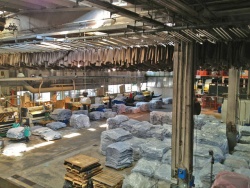
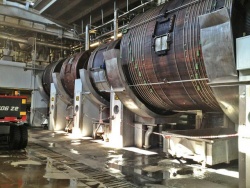
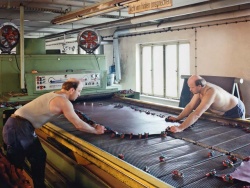
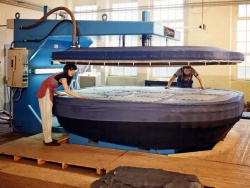
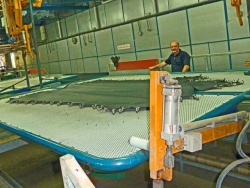
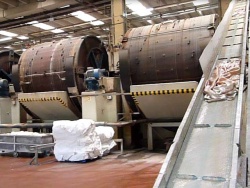
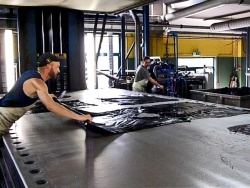
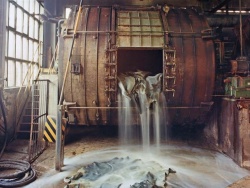
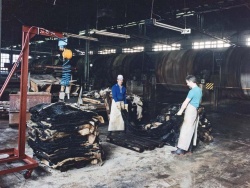
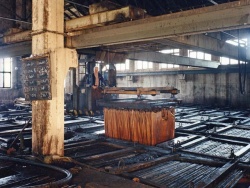
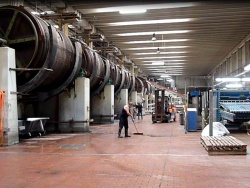
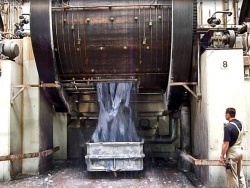
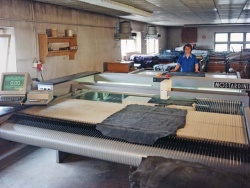
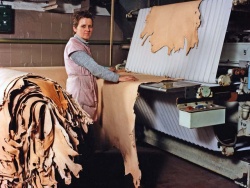

 a kotori web solution
a kotori web solution